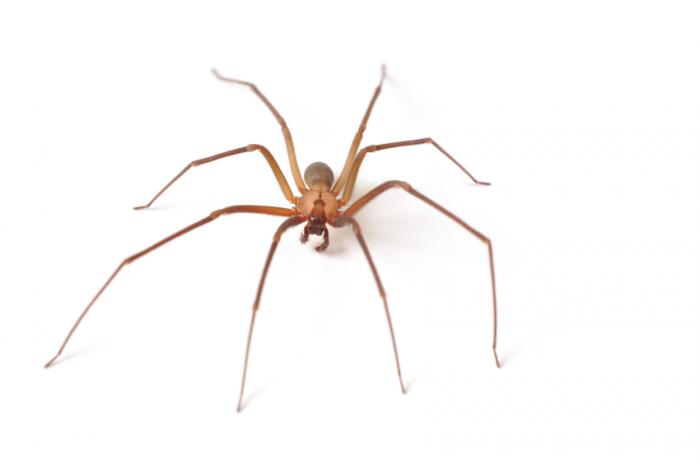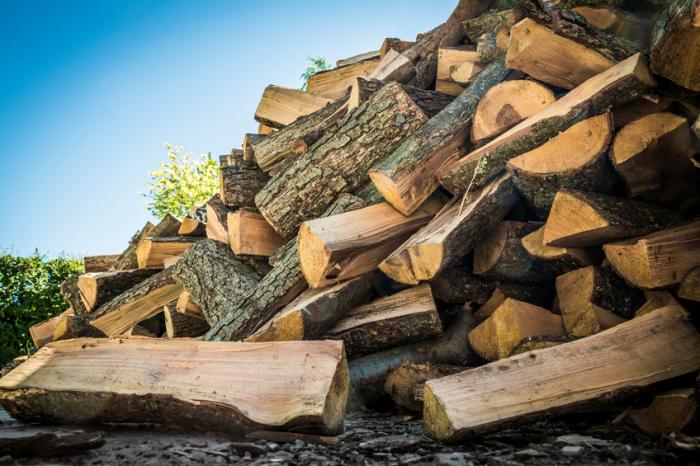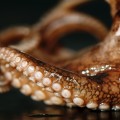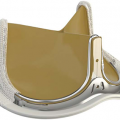There are more than 3,500 species of spiders that are found in the United States. Although many people are scared of these creatures, only about a dozen species are actually harmful.
These fall into two different groups: brown spiders and widow spiders. Brown recluse spiders are a member of the brown spider group. The other well-known poisonous spider is the black widow spider, which falls into the widow group.
Contents of this article:
- What are brown recluse spiders?
- What does a brown recluse spider bite look like?
- Home treatments for brown recluse spider bites
- Preventing brown recluse spider bites
What are brown recluse spiders?

Brown recluse spiders prefer to hide rather than bite humans.
The brown recluse spider is also known as the violin or fiddle-back spider. It is most commonly found in the Midwestern and southeastern part of the U.S. This spider is brown and has a darker violin-shaped spot on its back.
Unlike other spiders that typically have eight eyes, brown recluse spiders only have six eyes. The legs of a brown recluse are also thicker and not as spindly as other spiders.
These spiders are most active at night and hide during the day in dark areas to rest. If they come indoors, brown recluse spiders prefer closets, attics, basements, and other dark areas of the house.
The venom of a brown recluse is highly poisonous, but the spiders are only able to release a small amount during a bite. People are also more likely to come into contact with the male spider, which has only half as much venom as the females.
Why do they bite humans?
Brown recluse spiders do bite humans, but only rarely. They are not aggressive towards humans and prefer to run away rather than bite.
Bites happen most often when the spider gets tangled between bedsheets or clothing and skin.
When living in an area where these spiders are found, it’s important to check and shake out linen and clothes before using them. This is important if they haven’t been used recently.
What does a brown recluse spider bite look like?
There are many myths about brown recluse spider bites. One myth is that they always cause severe wounds where the skin tissue is destroyed. Only a small number of bites actually result in this type of injury.
The bite is usually painless to begin with, and symptoms progress with time. Over the first hour, someone with a brown recluse spider bite might experience:
- Redness
- Swelling
- Burning sensation
Over the next 8 hours, the site of the bite gets bigger and forms a blister. Within a day, the bite hardens into a painful lump and scabs over. The entire wound is often gone within about 2 months.
If the skin around the bite darkens or turns purple within the first few days, tissue destruction is possible. Rarely, the venom can spread through the entire body and cause symptoms like fever, nausea, and muscle cramps.
Risk factors
While these spiders don’t bite humans often, they can pose a slightly higher risk to indoor workers. Machinists, janitors, and housekeepers might be at an even higher risk due to their greater likelihood of coming into contact with them indoors.
Living in the southeastern U.S. also increases the risk of infestation and accidental encounters with this type of spider.
Complications
Despite their bad reputation, only about 10 percent of brown recluse spider bites result in serious injuries. Death is even rarer.
Home treatments for brown recluse spider bites

Always seek medical advice if bitten by a brown recluse.
Most spider bites can be treated at home. If possible, people should collect and identify the spider that has caused the bite. The spider can be killed, but completely crushing it can prevent proper identification.
If someone is bitten, they should clean the wound with a mild soap and water and apply an over-the-counter antibiotic cream. They should raise the bitten area and try to keep it still.
If the bite is causing discomfort, bitten people should apply a cool compress or ice pack to reduce swelling and pain. A pain reliever, such as acetaminophen or ibuprofen, can be helpful in reducing discomfort. An antihistamine, such as Benadryl, may also help.
When to see a doctor
People should contact a doctor if a brown recluse spider is confirmed as being the biting spider. The doctor may recommend a tetanus booster if it’s been more than 5 years since the last one.
The doctor may also want to check the wound a few days after the bite to ensure that tissue is not being destroyed. Quick treatment can start if there are any concerns, which reduces the risk of other complications.
Diagnosis
There are many other conditions that can cause a severe wound similar to brown recluse spider bites. These conditions include impetigo, diabetes, and other bacterial infections.
Unless the spider has been caught and properly identified, it can be difficult to be certain about diagnosing a brown recluse spider bite.
Outlook
Someone who has been bitten by a brown recluse spider has an excellent chance of recovery, especially with quick treatment. In most cases, wounds from these types of bites heal completely within several weeks.
People with other medical conditions, such as diabetes or immune system problems, are at a higher risk of complications. It is especially important for them to contact their doctor in the event of an actual or suspected brown recluse spider bite.
Preventing brown recluse spider bites

Wood piles are common homes for the brown recluse spider.
Though brown recluse spider bites are rare, it is possible to further reduce the risk of getting one. The best way to do this is by avoiding areas where brown recluse spiders tend to live, such as outdoor wood or rock piles. Someone who must work near or around these areas should wear gloves.
When indoors, people should be sure to shake out clothing or bedding that has not been used for a while. This is particularly important if they have been stored in an attic, basement, or dark closet.
Taking other measures to prevent brown recluse spiders infestations is crucial. Cleaning out attics, sheds, closets, and basements gets rid of places where these spiders like to hide. Removing woodpiles outdoors can prevent an infestation outside.
Summary
Even though these spiders have gotten a bad name, the actual risk of severe injury or death from a brown recluse is quite small.
Simple preventive measures are quite effective in further reducing the risk of encountering these spiders. They are even more effective at preventing their bite.



